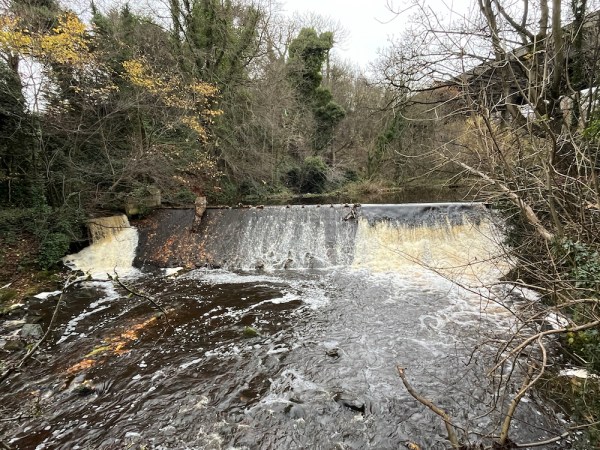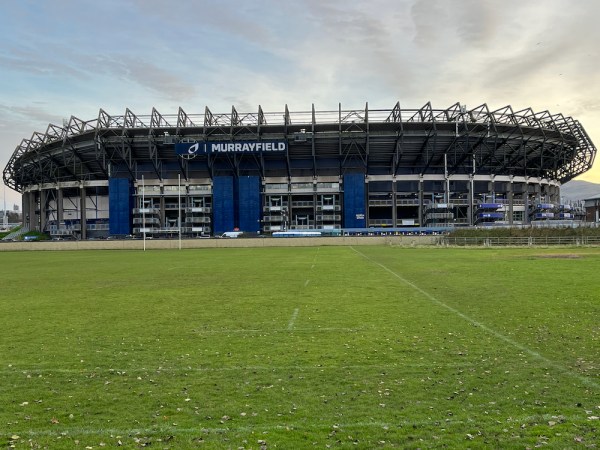Nestled within the boundaries of Edinburgh lies a hidden gem, the Water of Leith Walkway, offers a tranquil escape from the bustle of the city. Stretching over 12 miles, this scenic route follows the meandering course of the Water of Leith, leading from the charming suburb of Balerno to the picturesque district of Murrayfield and onward to the shore at the port of Leith. Embarking on this journey is not merely a walk; it’s an immersive experience through nature’s embrace and historical landscapes.
How to get there
From the centre of Edinburgh the Lothian Bus number 44 will take you to Balerno. Get of the bus at the stop for Balerno High School
Balerno: A Charming Starting Point
The Water of Leith Walkway commences in Balerno, now a suburb of Edinburgh and follows the route of an old railway line through Currie, Juniper Green and Colinton. As you set foot on the path, the air carries a sense of serenity, inviting you to explore the lush greenery and winding waters. The walkways initial stages showcase a blend of woodlands and open spaces, a perfect prelude to the natural beauty that awaits.

Nature’s Symphony Along the Way
The walkway unfolds like a living canvas. The tranquil flow of the Water of Leith accompanies your stroll, offering moments of reflection amidst the soothing sounds of nature. Towering trees arch overhead, their branches swaying in harmony with the gentle breeze, creating a canopy that dapples sunlight onto the path.
Wildlife enthusiasts will revel in the opportunity to spot various bird species along the water’s edge – herons poised majestically, ducks leisurely gliding across the surface, and perhaps even the elusive kingfisher darting by in a flash of blue and orange.



Historical Treasures En Route
As you venture forth, history whispers through the surroundings. The walkway weaves past remnants of Edinburgh’s industrial heritage, from old mills to remnants of railways, hinting at the city’s past.

The railway line ran from the Caledonian Station in Princes Street and opened in August 1874. It was built to transfer goods to and from the mills which line the upper Water of Leith such as the West Mills in Colinton where Scott’s Porage Oats was milled. There was also a large paper mill (Kinleith Paper Mill) at Currie which closed in 1966. Now an attractive modern housing estate.


The passenger service operated by the Caledonian Railway Company ran until 1943. It proved popular with the residents of Edinburgh making trips for picnics in Colinton Dell or Spylaw Park. Freight services continued on the line until December 1967.


The Colinton Railway Tunnel
One of the highlights of the walk is walking through the Colinton Railway Tunnel and visiting Scotland’s largest heritage mural. The words on the wall are from Robert Louis Stevenson’s “From a Railway Carriage” It describes a child’s first rail journey. As you make your way through the tunnel you will see that the illustrated poem runs along one wall. Other illustrations link across the roof and connect with images reflecting the heritage on the opposite wall. Look for the crowds of people waiting for the Balerno Pug on the huge brick wall outside the tunnel at the Slateford end.




Lead muralist Chris Rutterford designed the entire mural around Robert Louis Stevenson’s poem “From a Railway Carriage”
“From a Railway Carriage by Robert Louis Stevenson”
To read the above poem click this link
A Short Walk along the Union Canal
The path crosses the Lanark Road by way of a footbridge offering you a view toward Edinburgh Castle joining the Union Canal crossing the bridge at Slateford. At the bottom of the steps you will find the first coffee stop on the walk in the Water of Leith Visitor Centre which is well worth a visit. It also offers for some, the first toilet stop on the walk..


The route continues past a small cemetery, allotments and across the river through the trees are the large blocks on HM Prison Edinburgh. Continue along the path following the signs which take you to Saughton Park and Gardens and your next coffee stop.
Saughton Park
Saughton Park was the site of the Scottish National Exhibition in 1908 and opened to the public as a public park in 1910. One of the highlights is the rose garden and recently refurbished bandstand. There are also glasshouses with a range of attractive tropical plants.


Murrayfield: Journey’s End
The route takes you toward Murrayfield Stadium home of Scottish Rugby and Roseburn Park with its wide open space. Murrayfield is also the home of Edinburgh’s only ice rink and curling centre.

On the main street in Roseburn you will find a bus stop on the bridge. Lothian buses 31 or 26 will take you back to Princes Street.
Tips for the Journey:
- Prepare Accordingly: Dress comfortably and wear sturdy footwear for the walk. Carrying water and light snacks. I stopped for a picnic in Spylaw Park.
- Seasonal Considerations: Embrace the seasonal changes; each season adds its own hues and moods to the landscape.
- Exploration Stops: Don’t rush; pause at key points like Old Mills, Colinton Station or Colinton Railway Tunnel, Spylaw Park, The Water of Leith Visitor Centre, Saughton Park, for a deeper exploration of their history and charm.
- Community Connections: Engage with locals; their stories and insights might enrich your experience.
The Water of Leith Walkway – In Conclusion:
Walking the Water of Leith Walkway from Balerno to Murrayfield offers more than a simple stroll; it’s an immersion into Edinburgh’s natural beauty and historical legacy. It’s an invitation to slow down, appreciate nature’s wonders, and savor the tranquility amidst the bustling city. So, lace up your shoes, embrace the path, and discover the serene allure of this hidden gem in Edinburgh.
Other Walks you might like to try on 2edinburgh.com
Edinburgh Walk for First Time Visitors click this link for more information
Edinburgh Old Town and Arthurs Seat click this link for more information
Walking the Forth Road Bridge to North Queensferry click this link for more information
